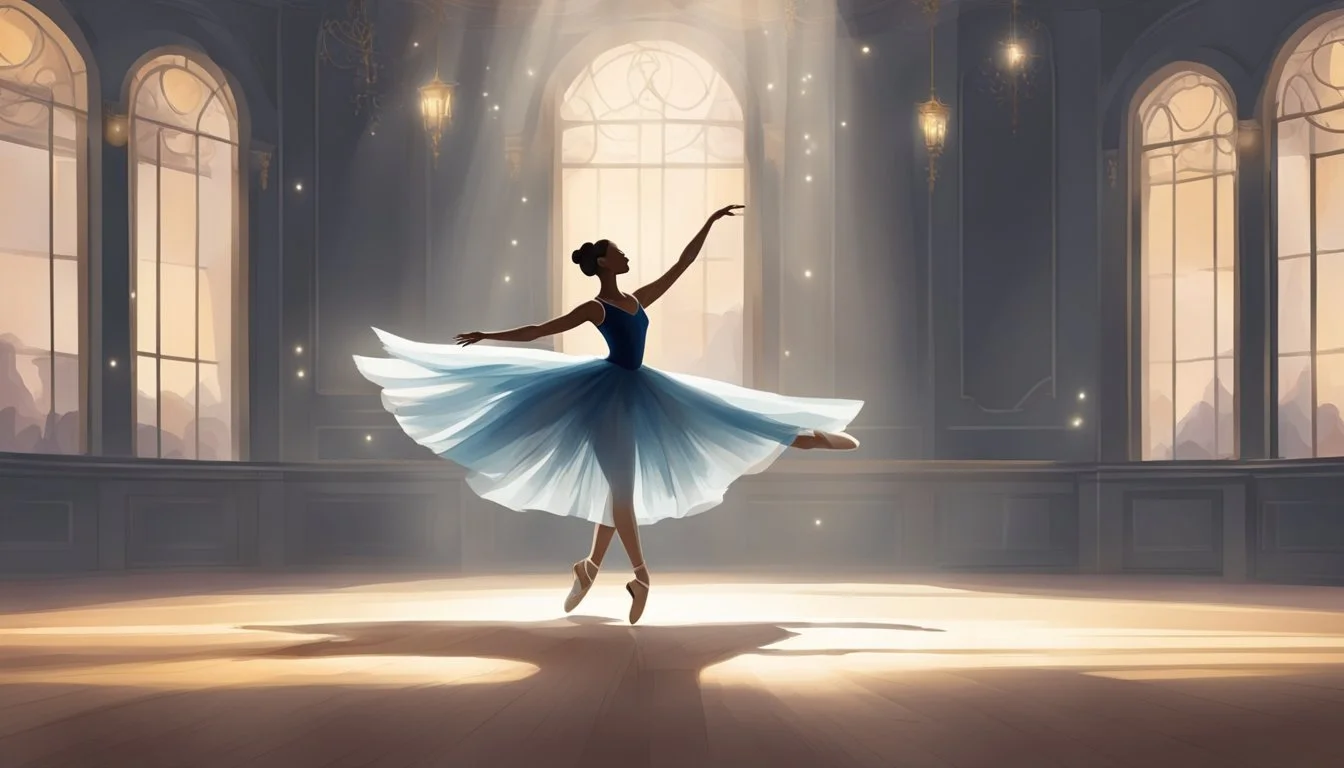8 Documentaries Every Dance Lover Should Watch
Essential Films for Movement Enthusiasts
Dance documentaries offer viewers a captivating glimpse into the world of movement, rhythm, and artistic expression. From classical ballet to street dance, these films showcase the dedication, passion, and creativity of dancers and choreographers across various styles and cultures.
For dance enthusiasts and curious viewers alike, documentaries provide an invaluable opportunity to explore the history, techniques, and personal stories behind different dance forms. These films often feature behind-the-scenes footage, interviews with renowned dancers and choreographers, and inspiring performances that bring the art of dance to life on screen.
1) Pina (2011)
Wim Wenders directed this visually stunning documentary about legendary choreographer Pina Bausch. The film captures her innovative dance-theater works through mesmerizing 3D cinematography.
Featuring performances by the ensemble of Tanztheater Wuppertal Pina Bausch, "Pina" showcases some of Bausch's most famous pieces. These include "Café Müller" and "The Rite of Spring."
The documentary blends stage performances with outdoor scenes filmed around Wuppertal, Germany. This unique approach brings Bausch's choreography into unexpected urban and natural settings.
Wenders originally planned to make the film with Bausch herself, but she passed away unexpectedly in 2009. The project evolved into a tribute, with her dancers sharing personal memories and reflections.
"Pina" received critical acclaim and numerous awards, including an Oscar nomination for Best Documentary Feature. It offers an immersive look into Bausch's groundbreaking work and enduring influence on modern dance.
2) La La Land (2016)
La La Land is a modern musical that pays homage to classic Hollywood while exploring contemporary themes. Directed by Damien Chazelle, the film stars Ryan Gosling and Emma Stone as aspiring artists in Los Angeles.
The movie features stunning dance sequences that blend traditional and contemporary styles. From tap dancing on a hilltop overlooking the city to an elegant waltz in a planetarium, the choreography is both mesmerizing and integral to the story.
La La Land's dance numbers serve as a visual representation of the characters' emotions and dreams. The opening sequence on a freeway showcases a vibrant ensemble performance, setting the tone for the film's magical realism.
While not strictly a documentary, La La Land offers dance enthusiasts a glimpse into the world of aspiring performers in Hollywood. It captures the passion, dedication, and challenges faced by those pursuing careers in the arts.
The film's choreography, created by Mandy Moore, combines elements of jazz, ballroom, and contemporary dance. It demonstrates how dance can be used as a powerful storytelling tool in cinema.
More information on La La Land
3) Step Up Revolution (2012)
Step Up Revolution is the fourth installment in the popular Step Up dance film franchise. Set in Miami, the movie follows Emily, an aspiring dancer who falls for Sean, the leader of a flash mob dance crew called "The Mob."
The film showcases impressive choreography and high-energy dance sequences. It features a mix of styles including hip-hop, contemporary, and Latin dance. The dancers perform elaborate routines in unexpected public spaces around Miami.
Step Up Revolution incorporates themes of community activism and artistic expression. The Mob uses their dance performances to protest against gentrification in their neighborhood. This adds a layer of social commentary to the typical dance movie formula.
Ryan Guzman and Kathryn McCormick star as the lead characters Sean and Emily. The movie received mixed reviews from critics but was praised for its dance sequences and choreography.
More information on Step Up Revolution
4) Center Stage (2000)
Center Stage takes viewers into the competitive world of professional ballet. The film follows a group of young dancers as they navigate the challenges of training at the prestigious American Ballet Academy in New York City.
Amanda Schull stars as Jody Sawyer, an aspiring ballerina striving to prove herself. The movie explores themes like perfectionism, body image, and finding one's artistic voice.
Center Stage features impressive dance sequences that showcase both classical ballet and more contemporary styles. It offers an insider's look at the dedication and sacrifices required to pursue a career in dance.
The film has gained a cult following over the years, appreciated for its portrayal of the dance world and coming-of-age themes. It continues to resonate with dance enthusiasts and general audiences alike.
Center Stage blends drama with dance, creating an engaging story that goes beyond just performances. It highlights the passion, competition, and personal growth inherent in pursuing artistic dreams.
More information about Center Stage (2000)
5) Mad Hot Ballroom (2005)
Mad Hot Ballroom follows New York City public school students as they prepare for a citywide ballroom dancing competition. The documentary captures the journey of fifth-graders from three different schools in Brooklyn, Washington Heights, and Tribeca.
Director Marilyn Agrelo skillfully depicts the children's dedication and growth throughout their dance training. The film showcases various ballroom styles, including merengue, rumba, tango, foxtrot, and swing.
The documentary provides a heartwarming portrayal of the young dancers' experiences. It highlights the positive impact of ballroom dancing on their confidence, social skills, and academic performance.
Mad Hot Ballroom offers a unique glimpse into the diverse cultures and backgrounds of New York City's youth. The film captures both the challenges and triumphs faced by the students as they learn to dance and compete.
Through beautiful cinematography and energetic editing, the documentary brings the excitement of ballroom dancing to life. It demonstrates the power of art education in transforming young lives.
More information on Mad Hot Ballroom (2005)
6) First Position (2011)
First Position offers a captivating glimpse into the world of competitive ballet. The documentary follows six young dancers as they prepare for the prestigious Youth America Grand Prix competition.
Director Bess Kargman showcases the dedication and sacrifice required to excel in ballet. Viewers witness the intense training regimens and emotional challenges faced by these aspiring dancers.
The film highlights dancers from diverse backgrounds, including Aran Bell, Miko Fogarty, and Joan Sebastian Zamora. Each contestant brings their unique story and passion to the competition.
First Position reveals the physical and mental demands of ballet at the highest level. It captures both the triumphs and setbacks experienced by these young performers as they pursue their dreams.
The documentary provides insight into the cutthroat nature of professional ballet. It explores the limited opportunities available and the fierce competition for scholarships and contracts.
More information on First Position (2011)
7) A Ballerina's Tale (2015)
This documentary follows the remarkable journey of Misty Copeland, the first African American woman to become a principal dancer at the American Ballet Theatre.
The film showcases Copeland's rise to prominence in the ballet world, highlighting her exceptional talent and determination. It explores the challenges she faced, including racial barriers and body image expectations in the elite ballet community.
A significant portion of the documentary focuses on Copeland's recovery from a potentially career-ending injury. Viewers witness her resilience as she works through six fractures in her left shin, demonstrating her unwavering commitment to dance.
The film features footage of Copeland's performances, including her critically acclaimed role in "Firebird." It also includes interviews with Copeland and other influential figures in the dance world.
"A Ballerina's Tale" not only celebrates Copeland's achievements but also addresses broader issues of diversity and representation in classical ballet. It offers an inspiring look at one dancer's impact on an entire art form.
8) Every Little Step (2008)
"Every Little Step" takes viewers behind the scenes of the 2006 Broadway revival of "A Chorus Line." This documentary captures the intense audition process for the iconic musical, showcasing the struggles and triumphs of aspiring performers.
The film interweaves the casting journey with the history of the original 1975 production. It explores how creator Michael Bennett developed the show based on real dancers' stories and experiences.
Viewers witness the grueling auditions as hopefuls compete for roles. The documentary highlights the immense talent, dedication, and vulnerability required to make it on Broadway.
Directors James D. Stern and Adam Del Deo provide an intimate look at the creative process. They capture emotional moments as dancers pursue their dreams and face rejection.
"Every Little Step" offers dance enthusiasts a rare glimpse into the competitive world of musical theater. It celebrates the passion and perseverance of performers striving to be part of a legendary show.
The Influence of Dance on Film
Dance has profoundly shaped the evolution of cinema. It has transformed visual storytelling techniques and expanded representation of diverse cultures on screen.
Impact on Cinematic Techniques
Dance-inspired cinematography revolutionized the way filmmakers capture movement. Choreographed camera work mimics dancers' fluid motions, creating dynamic and immersive viewing experiences.
Directors like Busby Berkeley pioneered overhead shots and kaleidoscopic visuals, drawing inspiration from ballet formations. These innovations influenced future filmmakers across genres.
Editing techniques in dance films often match the rhythm and energy of performances. Quick cuts and seamless transitions mirror the precision of choreography, enhancing the visual impact.
Cultural Representation
Dance documentaries provide a platform for showcasing underrepresented communities. Films like "Rize" introduced global audiences to krumping, highlighting its cultural significance in South Los Angeles.
These documentaries preserve and celebrate diverse dance traditions. They offer viewers insights into the social contexts and historical roots of various dance styles.
By featuring dancers from different backgrounds, these films challenge stereotypes and broaden cultural understanding. They demonstrate how dance serves as a universal language, transcending geographical and linguistic barriers.
The Evolution of Dance Documentaries
Dance documentaries have transformed significantly over the decades, reflecting changes in both filmmaking techniques and dance culture. These films capture the artistry, passion, and social impact of various dance styles.
Historical Contexts
Early dance documentaries often focused on preserving traditional forms and showcasing renowned performers. In 1976, Satyajit Ray directed "Bala," a documentary celebrating T. Balasaraswati, a master of Bharatanatyam. This film set a precedent for documenting classical dance forms.
The 1980s and 1990s saw a shift towards urban dance styles. Breakdancing emerged as a popular subject, with films exploring its roots in New York City street culture. These documentaries helped legitimize street dance as an art form.
By the 2000s, dance documentaries began exploring broader cultural contexts. "Planet B-Boy" (2007) examined breakdancing's global impact, following international crews competing in the Battle of the Year.
Technological Advancements
Improved camera technology revolutionized dance documentaries. High-speed cameras allowed filmmakers to capture intricate movements in stunning detail. This technical progress enhanced viewers' appreciation of dancers' skill and athleticism.
Digital editing tools enabled more dynamic storytelling. Documentarians could seamlessly blend archival footage with contemporary interviews and performances. This approach enriched the historical context of dance styles.
Streaming platforms expanded the reach of dance documentaries. Films like "The Last Dance" (2020) found global audiences, connecting sports, music, and dance. These platforms also encouraged the production of more diverse dance documentaries, covering styles from krumping to ballroom culture.
Virtual reality is now opening new possibilities for immersive dance experiences. VR documentaries allow viewers to feel as if they're on stage with performers, offering unprecedented access to the world of dance.




